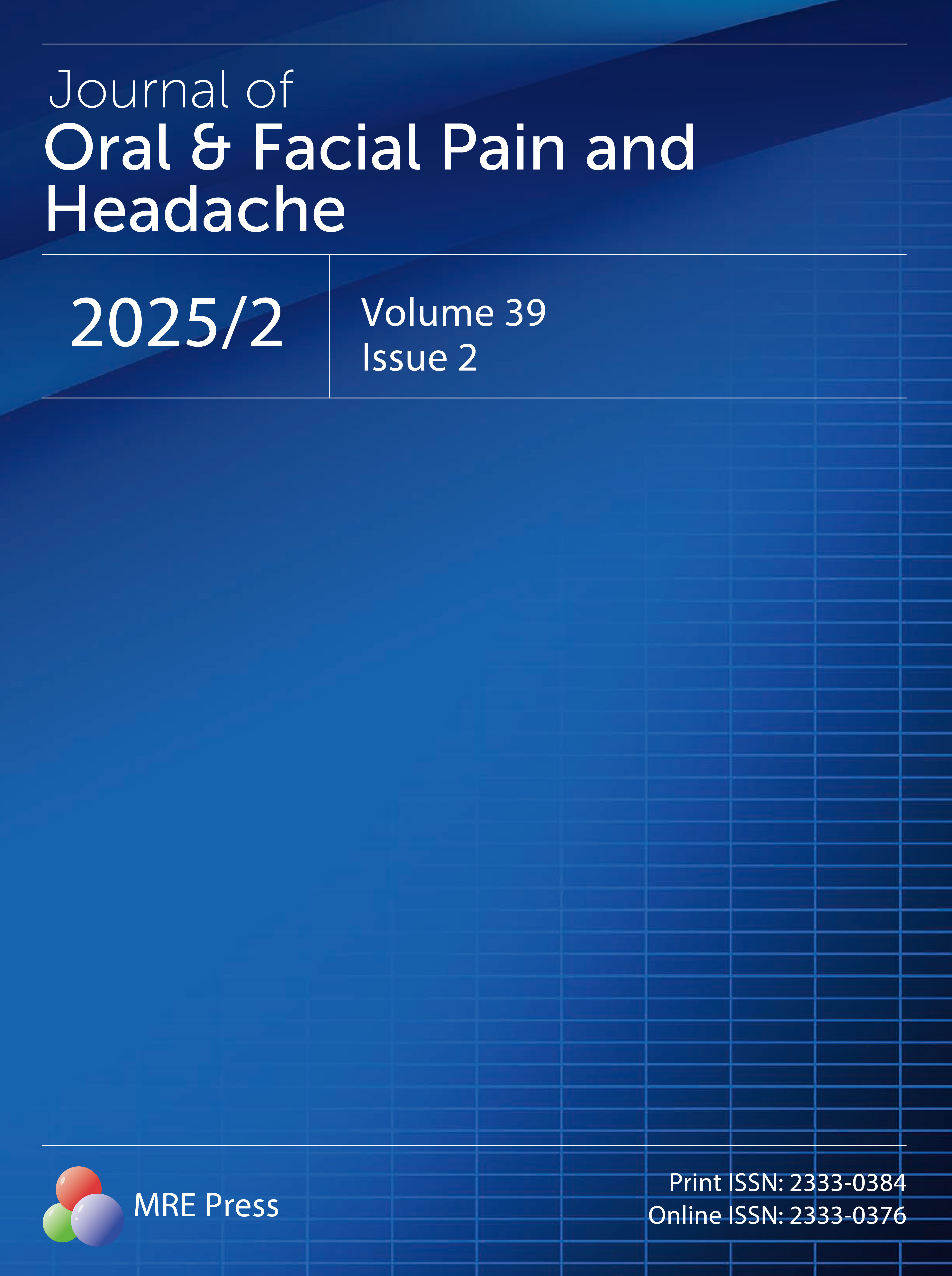Title
Author
DOI
Article Type
Special Issue
Volume
Issue
Article Menu
Export Article
More by Authors Links
Article Data
- Views 699
- Dowloads 65
Journal of Oral & Facial Pain and Headache (OFPH) is published by MRE Press from Volume 38 lssue 1 (2024). Previous articles were published by another publisher on a subscription basis, and they are hosted by MRE Press on www.jofph.com as a courtesy and upon agreement with Journal of Oral & Facial Pain and Headache.
Original Research
Open AccessRecording Mandibular Movement: Technical and Clinical Limitations of the Sirognathograph
Recording Mandibular Movement: Technical and Clinical Limitations of the Sirognathograph
- Ender Kazazoglu1
- M. Robin Heath1
- Anthony M. Ferman1
- Graham R. Davis1
1The Royal London Hospital Dental School, Turkey
Abstract
It is essential to know the limitations of any equipment used for research or clinical purposes. Clinical electronic equipment is commonly sold for "black box" use without specification of artifacts. This study tested the technical and clinical limitations of the Sirognathograph, which is a device used for recording mandibular movement. From a technical point of view, the Sirognathograph's slow sampling speed and sample artifacts have been shown to be the system's main limitations; however, it was possible to eliminate sampling artifacts by using a customized pulse generator and software for controlled data acquisition. Clinically, the Sirognathograph appears to have some inherent limitations in its accuracy. The effect of cranial movements during mastication can cause a baseline drift with consequent errors in the recording of mandibular position. This problem was controlled in this study by using a headband to stabilize the cranial movements during mastication. Also, the spatial relationships between the aerial and both the cranial base and the magnet were found to be critical for repeatability of the recordings.
Cite and Share
Ender Kazazoglu, M. Robin Heath, Anthony M. Ferman, Graham R. Davis. Recording Mandibular Movement: Technical and Clinical Limitations of the Sirognathograph. Journal of Oral & Facial Pain and Headache. 1994. 8(2);165-177.
References

Abstracted / indexed in
Science Citation Index (SCI)
Science Citation Index Expanded (SCIE)
BIOSIS Previews
Scopus
Cumulative Index to Nursing and Allied Health Literature (CINAHL)
Submission Turnaround Time
Editorial review: 1 - 7 days
Peer review: 1 - 3 months
Publish Ahead of Print: within 2 months after being accepted
Notes: Your information is kept confidential throughout the review process.
Top
